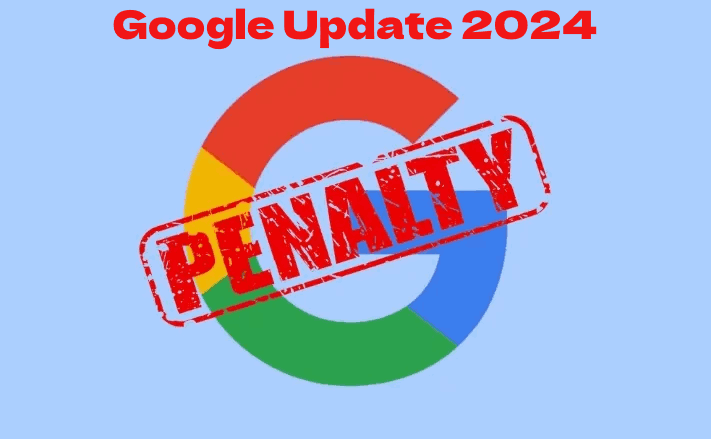Battling Google Manual Penalty: A Guide to Recovering from Pure Spam or Misleading Content
Google’s relentless pursuit of a high-quality search experience often leads to website owners facing the dreaded google manual penalty. These penalties, issued when Google identifies violations of its webmaster guidelines, can significantly impact your website’s ranking and visibility.
If your site has been flagged for pure spam or misleading content in the recent March 2024 update, don’t despair! This guide equips you with the knowledge and steps necessary to diagnose the issue, fix the violations, and request a re-review from Google. We’ll delve into the specifics of pure spam and misleading content violations, outline the recovery process, and provide valuable resources to help you navigate the path towards a penalty-free website.
Understanding the Penalties: Pure Spam vs. Misleading Content
Pure Spam: Google defines pure spam websites as those “created with the purpose of manipulating search results.” This includes websites filled with irrelevant or low-quality content, doorway pages designed solely to redirect users, and sites that engage in keyword stuffing. Additionally, excessive affiliate links, auto-generated content, and hidden content can also trigger a pure spam penalty.
Misleading Content: Misleading content encompasses a broader range of violations. It can include intentionally false or deceptive information, content that makes false promises or guarantees, and websites that impersonate legitimate businesses or authorities. Additionally, content that lacks proper attribution, makes unsubstantiated claims, or promotes harmful or unsafe practices can also fall under the misleading content umbrella.
Understanding the specific violation levied against your site is crucial for crafting an effective recovery plan.
Identifying a Google Manual Penalty: The Search Console Lifeline
Your first step is to confirm whether your website has indeed been penalized. Google Search Console serves as your primary tool for identifying manual actions. Here’s how to check:
-
Log in to Search Console: Access your Search Console dashboard using your Google account associated with the website.
-
Navigate to Manual Actions: Under the “Security & Manual Actions” section, look for a report titled “Manual Actions.” This report details any penalties levied against your site.
-
Review the Report: If a manual action is present, the report will specify the violation type (pure spam or misleading content) and potentially list the specific pages triggering the penalty. Additionally, the report often provides links to relevant resources that explain the violation and how to address it.
What if there’s no report? If the report shows “No manual actions found,” then your site hasn’t been flagged for a google manual penalty (at least not yet). However, it’s still a good practice to regularly monitor Search Console for any potential future issues.
Crafting a Recovery Plan: Addressing the Violations
Once you’ve confirmed the violation type, it’s time to roll up your sleeves and tackle the flagged content.
For Pure Spam:
- Content Removal: Identify and remove any irrelevant or low-quality content. This includes doorway pages, excessive affiliate links, and auto-generated content.
- Keyword Optimization: Revisit your keyword strategy. Eliminate keyword stuffing and focus on natural keyword integration within quality content.
- Hidden Content Elimination: Ensure all content visible to users is also accessible to search engines. Remove hidden text, links, or images used for manipulation.
For Misleading Content:
- Fact-Checking and Corrections: Meticulously review all flagged content. Verify the accuracy of information and make corrections where necessary. Ensure proper citations for factual claims.
- Transparency and Disclaimers: Be upfront about potential risks or limitations. For instance, if you make income claims, provide disclaimers highlighting individual results may vary.
- Removing Deceptive Practices: Eliminate any content that impersonates legitimate businesses or makes false promises.
General Tips for Both Violations:
- Focus on User Value: Refocus your website on providing genuine value to users. Informative, well-written content that addresses user needs is key to regaining Google’s trust.
- Quality Over Quantity: Prioritize quality content over quantity. A smaller website with high-quality information is far better than a large one with irrelevant content.
- User Reviews and Engagement: Encourage user reviews and interactions on your website. Positive user engagement helps Google understand your site’s legitimacy.
Remember, recovering from a google manual penalty requires a commitment to providing genuine value and adhering to Google’s webmaster guidelines.
Requesting a Re-review: The Path to Reinstatement
After diligently addressing the violations, it’s time to inform Google of your efforts. Here’s how to request a re-review:
-
Revisit Search Console: Log in to your Search Console and navigate to the “Manual Actions” report.
-
Request Reconsideration: Once you’ve fixed the flagged issues, locate the “





